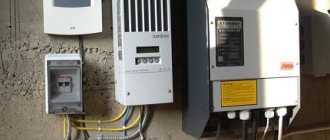What do you need to know to choose a pumping station?
In order for the selected station to cope well with its functions, the choice must be made taking into account your needs. In this regard, the following criteria can be identified , which should be primarily taken into account by the owner:
- Technical characteristics of the pumping station;
- Features of the well.
When considering the technical characteristics, the first thing to highlight is the performance of the unit. The best option is a device capable of providing water pressure from a well, which can satisfy the needs directly in the house, as well as in the surrounding areas.
Based on practical experience, we can say that for normal living in a country house or residential building designed for 4 people, it is recommended to choose a medium or low power . The design of such units includes a 20-liter hydraulic accumulator. Such a station is capable of supplying water from a well in an amount of 2-4 cubic meters. meters per hour and pressure 45-55 meters. An installation with such characteristics can fully satisfy the needs of a family of four.
When considering different installations, a number of other important indicators should be taken into account:
- productivity;
- size;
- water level when the pump is turned off;
- water level when the pump is running;
- type of filter;
- pipe width.
Diagram of the complex with a second lift pumping station
Through the pressure pipelines of the first lift pumping station, water flows to the treatment plant. After the treatment facilities, the water enters a special clean water reservoir, from where it is taken by pumps of the second lift station and supplied under pressure to the network. This scheme can be used for conditions in which the treatment plant is located next to the first lift station. Here, for ease of operation, the first and second lift pumps are installed in the same building.
To transport large volumes of water, conventional open channels are often used. For such conditions, the most typical solution would be a scheme where water is pumped out from the water source by pumps of the head pumping station and sent into the canal. Intermediate water lifting stations are located at a certain distance from each other, which sequentially pump up water. In this case, the longitudinal profile of the channel will take on a stepped appearance with separate gravity sections. The design of the main pumping station is practically no different from the first lift stations described above.
How is the pumping station constructed?
Any station contains such a mandatory element as a storage tank or hydraulic accumulator .
It is worth saying that the installation with a storage tank is an outdated design due to the presence of a large number of shortcomings. First of all, the tank has a fairly large capacity. In addition, to regulate the water level and its pressure, a float is used, which ensures that the sensor is activated if the water level drops. In this case, the sensor sends a signal to turn on the pumping. The main disadvantages are the following:
Recent Entries
Chainsaw or electric saw - what to choose for the garden? 4 mistakes when growing tomatoes in pots that almost all housewives make Secrets of growing seedlings from the Japanese, who are very sensitive to the soil
- Water is supplied to the system naturally, which is why the pressure at the outlet is insufficient;
- Due to the large size of the unit, it is not always possible to find a suitable place to install it;
- The system installation process is accompanied by certain difficulties;
- It is important to allocate space for the storage tank at the station itself, and this is fraught with additional problems;
- If the water level sensor fails, it overflows over the edge of the tank.
Installations equipped with a hydraulic accumulator are the most reliable and practical. Their popularity is due to their small size and lack of installation difficulties. The system design contains a relay that performs the duties of regulating the ambient air pressure limit.
By creating water pressure, it is compressed in the hydraulic accumulator. At the moment when the pressure reaches the required limit, the pump automatically turns off, as a result of which water from the tank flows into the tap. If the level decreases, the pump turns on again and continues to operate until the required water level is again achieved.
Basic installation and connection diagrams
When assembling a water supply system, various connection schemes for pumping stations in a private house can be used.
The most common schemes are:
- Diagram of direct connection of the device to the supply pipeline.
- Scheme with a storage tank.
Direct connection involves placing the station between the water intake and the in-house pipeline. Water is directly sucked from the well and supplied to the consumer. With this installation scheme, the equipment is located in a heated room - in the basement or basement. This is due to the fear of low temperatures. Freezing of water inside the device can cause its failure.
However, in regions with relatively mild winters, it is possible to place a water pumping station directly at the top of the well. To do this, a well buried in the ground is built above it, which is insulated to prevent the water inside the pipeline from freezing. If necessary, it is possible to use an electric heating wire. We will discuss all aspects of choosing an installation location in more detail below.
The connection diagram for a station with a storage tank looks slightly different. Water from the source is not supplied directly to the in-house system, but to a special volumetric storage tank. The pumping station itself is located between the storage tank and the internal pipeline. Water is pumped to the water collection points by the station pump from the storage tank.
Thus, in this scheme two pumps are used:
- A deep-well pump pumping water into the storage tank.
- A pumping station that supplies water from a storage tank to the water supply system.
The advantage of the scheme with a storage tank is the presence of a sufficiently large amount of water in it. The volume of the tank can be several hundred liters, and even cubic meters, and the average volume of the station’s damper tank is 20-50 liters. Also, a similar version of the water supply system is suitable for artesian wells, when one way or another it is necessary to use a deep pump.
Pumping station installation location
For the pump, you can choose a place directly in the house or in the caisson. The last option is a structure built in the ground .
This design provides it with protection from moisture, groundwater and low temperatures. It must be built under the soil freezing line. However, this option has several disadvantages. First of all, such a structure requires proper arrangement. In addition, in areas where harsh climatic conditions are observed, it is difficult to insulate the caisson, as a result, when exposed to low temperatures, there is a risk of pump failure. The most practical solution seems to be to install a pump in the house. It is best to install it in the basement. However, one important point needs to be mentioned here: you should be prepared for the fact that groundwater can create a threat of basement flooding . Therefore, during spring floods, when the room is filled with water, it is recommended to install the station on a hill so that water does not reach it. You need to choose a place for the station so that it is away from the walls, which will prevent unnecessary vibrations during operation. When placing the pump in the basement, you need to constantly monitor the temperature conditions throughout the year in order to thereby protect the installation from the effects of negative temperatures.
Rules for choosing a place
To select a suitable location for a pumping station, installation in which should take place in accordance with the technology, you must proceed from the following criteria:
- The distance at which the station will be removed from the well;
- Temperature and humidity conditions in the location chosen for installation;
- Availability of free space so that you can easily repair and maintain the unit;
- Carrying out work to insulate the premises to limit the spread of noise towards residential premises.
Pumping station connection diagram
To correctly install the pumping station with your own hands, you need to adhere to the following procedure for performing this work:
- Installation begins with digging a trench into which the pipes leading to the well will be laid. In this case, you need to ensure that the station has an inclined position relative to the water intake point.
- Next, a passage is made through which the pipe will be brought into the wall of the building.
- At the next stage, they begin laying pipes into the trench.
- Why do they start connecting pipes to the pump?
A prerequisite for the installation technology of the pump is its placement on a special base . The legs must be fixed to the base using anchors. As a result, it will be possible to ensure increased stability of the structure. To minimize vibrations, the pump should be mounted on a rubber mat.
Connecting a pumping station with your own hands in a private house with a remote ejector is carried out in accordance with the following algorithm:
- The first step is to install the ejector. The latter is designed in the form of a cast iron unit, which provides holes for connection. Usually it has three similar outputs.
- Next, a coarse filter in the form of a mesh is connected to the lower part of this unit.
- At the next stage, you will need a bend of suitable length, which is connected to a plastic socket at the top of the assembly.
- The drive consists of two parts, which, in turn, have separate adapters. Therefore, it is necessary to choose a version of its design that corresponds to the required diameter.
- After this, a bronze coupling is attached to the outlet of the outlet, with the help of which a transition to the polyethylene pipe will be created.
- To ensure that all connections are tight, it is recommended to use flax or sealing tape.
- After this, they begin to lay the pipes in the dug trench. Moreover, their placement depth should be less than the soil freezing level.
- When the trench is ready, pipes are laid in it so that there is a reserve. It is recommended to use a head or elbow with a smooth angle as a casing pipe.
- A coupling is used to secure the pipe and ejector.
- You need to take the lower end of the tube and connect it to the elbow perpendicularly, and then lower it. To ensure tightness, the free space is filled with polyurethane foam. Next, the pipe is mounted to adapter 900 and to the pipeline.
- After the installation of the ejector is completed, it is immersed to the required depth in the place where water will be collected. This parameter is determined before installation work. As a rule, it is selected at a level corresponding to the top line of the casing.
- Finally, a head is attached to the casing using reinforced plumbing tape.
Installation errors
During the installation of a pumping station, there is a risk of making mistakes:
- To avoid problems, pipes for installation must be larger than the calculated value. Such a reserve will allow you to compensate for bends, turns and the thickness of the foundation if the station is installed in a room in the house.
- It is recommended to use only a wrench to tighten parts. If you try to perform this operation manually, there is a risk of a leak subsequently occurring.
- You especially need to be attentive to the hydraulic accumulator. The pressure in it should be at least 1.2-1.5 atmospheres. If the pressure drops below the specified mark, it is necessary to use appropriate devices - a compressor or a car pump, which will help restore the required pressure.










